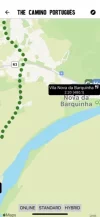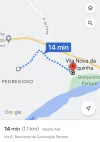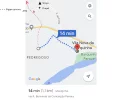Thanks, you guys, for your great responses! Interesting to see that the assumption is that I'm a "he"--not the case, and though my partner would most definitely end up involved in the renovation end of things, if this flew it would be my Portuguese retirement project

Interesting idea, to query passing pilgrims. Setting up a table would not be impossible, but from my observations so far--not high summer, but definitely through the spring and fall shoulder seasons, there would be a lot of waiting around to talk to not many people. In this part of Portugal, the pilgrims are still fairly thin on the ground and pass at unpredictable intervals.
Because of that, I'd be very, very surprised if this, as a private enterprise, were a money-making project in the short or maybe even medium term. It would provide probably 2 or 3 part-time jobs in our community, which would be valued, but not much more income than that and nothing for the person investing in the premises. And because of that, questions that seem pertinent to me are--and these are not so much ones that
current walkers can answer, but
past ones possibly can...
1. Among today's walkers, are there significant numbers who prefer shorter days to the 18-25 km ones that seem to be typical in most of the guidebooks (if not, the current pension densities in Golega and Tomar probably fit the bill for most). I notice quite a lot of the members posting on the Forum are post-65 years old; do they like shorter days?
2. Among the less affluent pilgrims, is there any particular preference between public albergues and private pensions? Public ones are generally cheaper; is there anything about a private one that outweighs the savings in a public one? Our municipality is fairly progressive and has some interesting surplus buildings in the neighbourhood that I think is best located for accommodating caminho walkers. If a municipally run guesthouse would do the job, perhaps lobbying our local
camera and
freguesia is a better way to go than trying to start it as a business!
I'm sure I'll think of more questions later! Keep the commentary coming...
Thanks, everyone, for your input so far.
Kathy


























